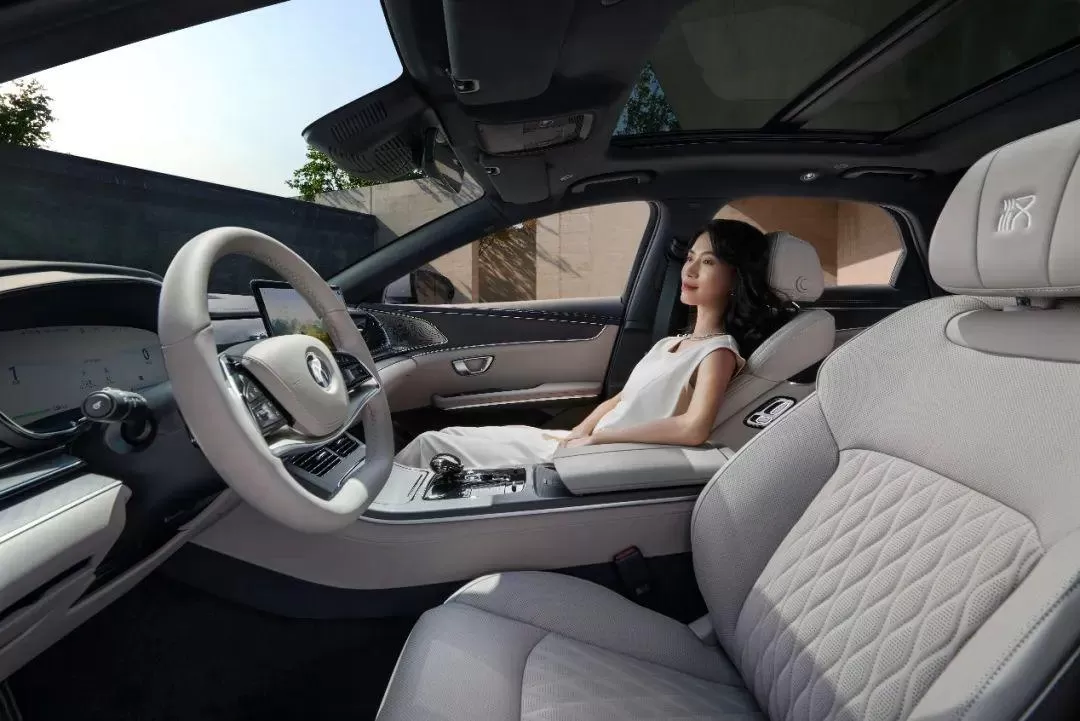On September 9. the 2025 edition of BYD Han was officially launched. The new lineup includes five DM-i models and four EV models. The Han DM-i is priced between RMB 165.800 and RMB 225.800. while the Han EV ranges from RMB 179.800 to RMB 235.800. This edition of Han has undergone comprehensive upgrades, both inside and out. The new Han DM-i features the fifth-generation DM technology, with a fuel consumption of just 3.8L/100km, marking the era of "3" in fuel consumption for mid-to-large sedans. Some Han EV models are equipped with an 800V high-voltage platform, and both models have adopted a new five-link rear suspension and the DiSus-C system. Additionally, the new models will feature the DiPilot 300 advanced driver assistance system, along with the first use of LiDAR and the Orin X smart driving chip.
One-Sentence Review of the Han 2025 Edition:
With advanced driver assistance, the Han is even more formidable. Its future market performance is worth anticipating.
Advantages:
1. Low entry price—under RMB 170.000.
2. Highly functional DiLink 100 infotainment system.
3. Excellent fuel economy for the Han DM-i, at just 3.8L/100km.
4. Some models come with advanced driver assistance systems.
5. High-spec chassis hardware.
Disadvantages:
1. Advanced driver assistance capabilities are yet to be fully tested.
2. The two-wheel-drive version has a front-wheel-drive layout.
As a facelifted model, the 2025 BYD Han’s exterior design remains largely consistent with the previous model. The most notable change is the Han DM-i’s new Dragon Face design, now shared with the Han EV, giving the front a cleaner look that aligns with its identity as a new energy vehicle. A black-out package is available as an option, with black chrome accents on the front grille and air intakes, adding to the sporty feel. A new "Weiyang Grey" color option also enhances vehicle recognition and better meets personalized consumer demands.

The exterior of the Han EV also showcases noticeable upgrades. The LiDAR sensor on the roof indicates its advanced driver assistance capabilities and higher level of intelligence. Some users may not notice that the grille density on the Han EV is actually higher than on the DM-i, with the EV being more compact and the DM-i relatively sparser.
Interior Highlights:
Inside, the 2025 BYD Han largely continues the design style of the previous model, maintaining a luxurious and upscale feel. The two-spoke flat-bottom steering wheel adds a hint of sportiness to the interior.
The 12.3-inch full LCD instrument cluster and the 15.6-inch adaptive rotating center console screen are still present. The center console screen features the advanced DiLink 100 infotainment system, equipped with 5G network support, an app store, all-scenario intelligent voice control, and remote control via a mobile app. Both functionality and smooth operation are at the top of the industry. The new model also comes with 13 airbags, a panoramic sunroof with an electric sunshade, heated steering wheel, in-car fragrance system, and in-car ETC (Electronic Toll Collection). Standard features across the lineup include adaptive cruise control (ACC), 50W wireless fast charging for smartphones, NFC car keys, VTOL mobile power station, and 3D holographic transparent imaging, offering a high-end configuration from the get-go.
Smart Driving:
The 2025 BYD Han is equipped with the DiPilot 300 advanced driver assistance system, powered by the Orin X smart driving chip with a computing power of 254 TOPS. The car also features one LiDAR sensor, 13 cameras, 12 ultrasonic radars, and five millimeter-wave radars, totaling 31 high-precision sensors. It achieves L2+ level driving assistance, enabling features like urban navigation, highway pilot, and valet parking.
Powertrain and Efficiency:
BYD's latest fifth-generation DM technology is featured in the Han DM-i, a flagship model in the Dynasty series. It is powered by a 1.5Ti high-efficiency engine, delivering a maximum power of 115 kW and peak torque of 231 N·m. The electric motor provides a maximum power of 200 kW and peak torque of 315 N·m, with a combined system power of 310 kW. The official 0-100 km/h acceleration time is 6.9 seconds, and the NEDC fuel consumption is as low as 3.8L/100 km, making it a leader in fuel efficiency for mid-to-large sedans.
In terms of range, all Han DM-i models come with an 18.316 kWh lithium iron phosphate battery pack, offering a CLTC pure electric range of 125 km. When fully fueled and charged, the total range reaches 1.350 km.
The 2025 Han EV models also see significant changes in their powertrain. Mid-to-high-end models are equipped with the 800V high-voltage platform, and the entire lineup features the ultra-safe blade battery, intelligent thermal management system, and wide-temperature efficient heat pump technology. Under CLTC conditions, the longest range is 701 km, and charging from 10% to 80% takes just 25 minutes. The vehicle also supports up to 6 kW of external power discharge.
Chassis and Suspension:
The 2025 BYD Han lineup has upgraded to a front MacPherson strut and rear five-link independent suspension system, equipped with FSD variable damping shock absorbers. Higher-end models feature the DiSus-C intelligent damping body control system, enhancing stability, comfort, and handling performance.
Final Thoughts:
For those who have been keeping an eye on the BYD Han, you may have noticed that the price of the 2025 Han DM-i models has actually increased compared to the previous versions—by RMB 6.000 for the Elite and Premium versions. However, I don’t think this will dampen consumer enthusiasm, as the new models come with significantly upgraded features, enhancing the overall value. The addition of the advanced driver assistance system also fills a key gap, making the Han a true "all-around warrior." Let’s look forward to the future market performance of the 2025 Han!






